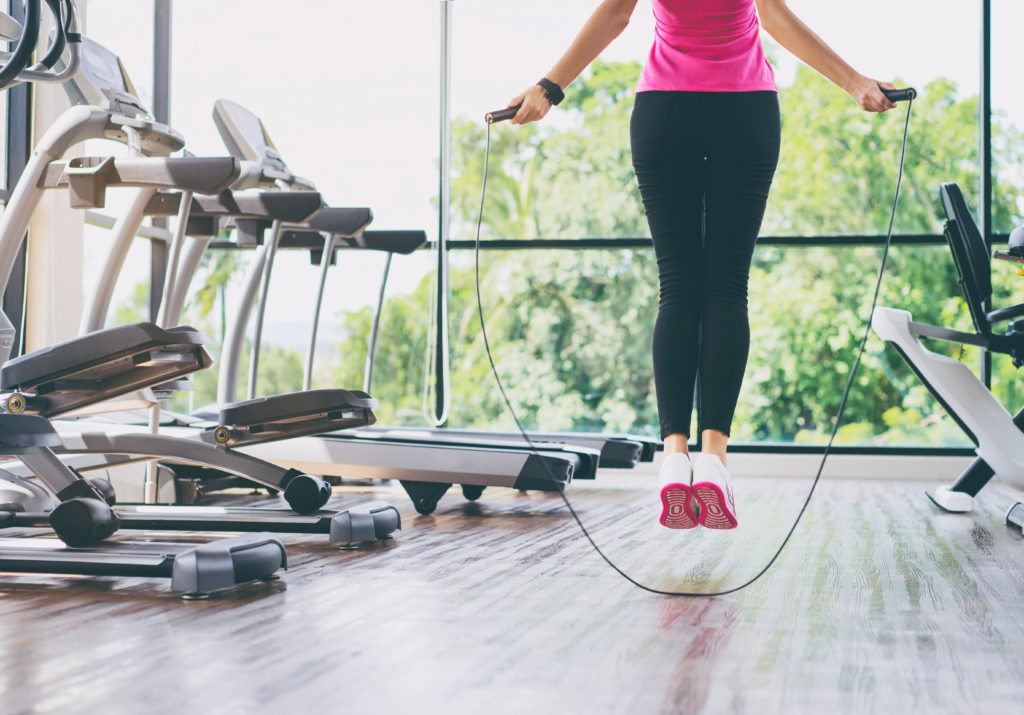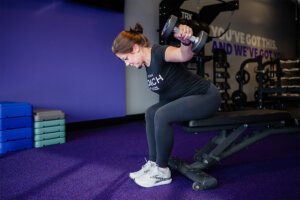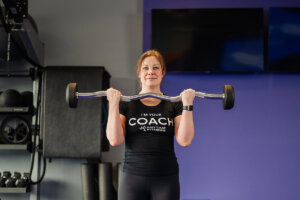Boxing has existed since the dawn of history, first introduced to the ancient Olympic games in the 7th century B.C. It is arguably the oldest sport, and includes some of the greatest athletes in the world: Muhammad Ali, Mike Tyson, Floyd Mayweather, just to name a few. The average boxing match only lasts twenty minutes, with each round lasting three minutes. Although that might seem like a short amount of time, it is still an endurance sport and requires an insane amount of cardiovascular endurance from each boxer. When they’re in the ring for those three minutes, fighters must work to throw different combos of punches, jabs, crosses, and hooks, all while trying to dodge their opponent’s fists at the same exact time. To be a good boxer, there are a lot of technical skills you need to know like proper punching form and technique, the different types of punches, and the correct stance and footwork, but you also need to be a strong, endurance athlete. You must have equal parts cardiovascular endurance and muscular endurance, while being able to punch with intensity, strength, and power.
Okay, so maybe training to be a fighter isn’t one of your first choices; not everyone wants to put on a pair of gloves and jump in the ring to throw punches at another person, while simultaneously holding your hands at your chin to block jabs and hooks from your opponent to your head and face—even if it is just a class. But just because you don’t want to be a boxer, doesn’t mean you can’t train like one! The training regimen of fighters is more than just slapping on a pair of boxing gloves and hitting your fists against a speed bag or hanging heavy bag like most people might think. In fact, there is a lot of endurance training—and even weight training—that goes into practice sessions, ultimately transforming you into a very well-rounded athlete. Boxing workouts can help you focus and build the following skills:
Endurance, stamina, and conditioning. In order for a boxer to maximize their performance for an extended period of time, especially in later rounds, it’s important for them to train as an endurance athlete. Training your cardiovascular system allows your body to increase the amount of oxygen it can intake during exercise, also known as your VO2 max. As your body absorbs oxygen during exercise, your muscles begin to convert it into energy that powers each movement. Performing intervals, strength training circuits, shadow boxing, and other cardio-based sessions like running, biking, and climbing stairs, are examples of endurance training; the goal is to keep your heart rate up for an extended period of time to challenge your heart and lungs to adapt to the higher level of intensity.
Total-body strength and power. Boxing workouts will incorporate strength training moves that work each muscle group in your upper and lower body, including your abs—all at the same time! These types of exercises can be done with or without equipment, depending on your goals. If you are aiming for power and strength, you’ll likely want to do weight training with some sort of gym equipment to add resistance and intensity, such as: dumbbells, kettlebells, or barbells. If you’re looking to gain muscular endurance (which you will with boxing workouts), you’ll want to stick to sets of high repetition bodyweight or lightweight exercises, like punching a heavy bag, or even your typical lunges, squats, or push-ups. The best fitness routines have a combo of both!
Stability, balance, and coordination. Boxing requires you to have total-body coordination; as a fighter, you must be quick on your feet, and have good hand-eye coordination to throw punches at the same time. Even shadow boxing, something that doesn’t require actually making contact with a heavy bag takes coordination. If you’ve ever stood in front of a speed bag and tried to hit it with your fists—that small bag in the shape of a teardrop that hangs down from a circular platform—you know just how much hand-eye coordination you actually need. But as we mentioned earlier, boxing workouts aren’t centered around just punching bags. A lot of workouts will incorporate drills and actions that focus on a combo of footwork, agility, balance, and stability, too. Not only do these skills help you become a better fighter, they also translate into improving your everyday motor skills.
Mental toughness. We’ll just come out and say it: boxing workouts can be challenging, and they’re not always for every person; but remember, in order to be a boxer, you have to be tough—both physically and in your mind. Even if you’re stronger, faster, and have more stamina than your opponent, that doesn’t mean you’ll always win in the end. Sometimes, it comes down to who has the bigger heart and stronger mind. Sticking with boxing workouts and pushing through each repetition will help your mind stay mentally fit—and that will help you in the gym and in your everyday life, too. And don’t forget, if you don’t feel like you can do it alone, a coach can help!
Boxing Endurance Workout for Beginners
Level: Beginners to Intermediates
Time: 45 minutes to an hour
This workout will whip you into shape and have you seeing—and feeling—the results in no time! Whether you’re looking to train for an endurance sport, or just looking for new activities to add into your fitness program, this workout is for you. We’ve combined a mix of cardio (don’t worry non-runners, there’s no running) and weight training exercises that will burn calories and build your muscular endurance, as well as your muscular strength. To build muscular endurance and stamina, it’s important to keep your body moving and heart pumping for the full 45 minutes to an hour. Instead of designing this workout to keep your body working at the same level the entire time (think of distance running for a mile or marathon), we’ve laid it out into quick, intense intervals (like a sprint up a hill) instead.
You’ll complete 15 reps (30 reps when jump roping) of each exercise for three rounds, moving from one movement to the next with the goal being to rest as little as possible in between exercises. At the end of each round, you’ll rest for 60 seconds. Try to go your full-out sprint speed for each move, while still keeping the correct form.
A few tips before you get started:
- Read through each exercise description for a quick how-to to make sure you have the correct form and technique for each movement.
- Engage your abs! Even if you don’t think it’s a core exercise, you can make it one by tightening them! Plus, it will help you keep good form, too.
- Breathe and take a break, if needed. People can be tempted to try to sprint through circuit workouts, either in hopes of burning extra calories or just getting done faster, but sometimes that results in more harm than good. Be sure to reflect on your abilities and where you are in your fitness journey. It’s OK to take it slow!
- Remember: there’s such a thing as pushing through pain, but if anything hurts during this workout, stop. Pain can be the sign of underlying issues and injuries. If you have questions, or you’re unsure, talk to a coach.
Let’s get to it!
Jump Rope
- Stand upright holding the handles with your arms by your sides and the rope behind you.
- Swing your arms straight back and up overhead, then down in front in a big circle.
- As the rope comes down in front, jump to allow it to clear your feet.
Burpee
- Start at the top of a push-up stance.
- Jump your feet in, bringing your knees to your elbows while keeping your hands on the floor.
- Come to an upright position and lunge into the air, raising your arms overhead.
- Return to the mid position.
- Jump your feet back out to a straight position.
V-Up
- Lie on your back with your legs straight and your arms stretched out overhead.
- Raise your legs straight up while also lifting your upper body off the floor and reach your hands toward your feet, keeping both your arms and legs straight.
- Slowly lower your upper body and legs back to the floor and repeat, keeping the reps smooth.
Hanging Side Knee Raise
- Hang from a secure bar overhead with your arms and legs straight.
- Raise your knees toward your chest, bending at your hips and knees and twist to one side.
- Lower your legs and repeat to the other side, keeping your arms straight and ankles together. Try not to swing back and forth.
- Alternate sides with each rep.
Jump Rope
- Stand upright holding the handles with your arms by your sides and the rope behind you.
- Swing your arms straight back and up overhead, then down in front in a big circle.
- As the rope comes down in front, jump to allow it to clear your feet.
Mountain Climber
- Support your body on your toes and hands with one knee bent and drawn up into your chest and the other leg straight out behind.
- Alternate jumping your feet in and out, bringing your knees into your chest each time and keeping your hands on the floor.
Frog Sit-Up
- Lie on your back with your legs straight and arms out to the sides at shoulder height.
- Lift your upper body off the floor, bringing your arms straight together in the middle, reaching forward while also bringing your knees in to your chest and ankles together.
- Lower back to the floor and repeat.
Roll Out (Suspension Trainer)
- Stand upright holding the handles in front at waist height with your arms straight.
- Lean forward onto your toes as you raise your arms out and up overhead lowering your body into an incline position.
- Lower your arms and return back up to the upright position.
- Modification: You can also do this exercise while kneeling.
Side-to-Side Shuffle
- Take an upright stance with your right foot on the ground and your left foot on a step, with your arms by your sides.
- Hop your right foot up onto the step, as you simultaneously bring your left foot down the other side to the floor.
- Repeat back and forth up and over the step, alternating with your right foot on the bench and left on the floor. Do 15 reps with your right foot starting on the floor, and 15 reps with your left.
Alternating Bridge
- Support your body off the floor, resting on your toes and forearms.
- Raise one arm and lead your opposite leg straight up with your heel, about 18 inches off the floor.
- Hold briefly, squeezing your core, butt, and back muscles, then lower yourself back to the floor and repeat with the other arm and opposite leg.
- Alternate sides with each rep.
Bicycle Crunch
- Sit with your feet raised off the floor and knees bent, holding a ball at chest height.
- Twist your torso and the ball to one side, bringing one knee toward your chest and your opposite elbow to meet it.
- Twist to the opposite side using your other knee and elbow.
Jump Rope
- Stand upright holding the handles with your arms by your sides and the rope behind you.
- Swing your arms straight back and up overhead, then down in front in a big circle.
- As the rope comes down in front, jump to allow it to clear your feet.
You did it! Great work.
You’re on your way to becoming a strong, coordinated, endurance athlete with lots of stamina! If you struggled through this workout or with some of the weight training exercises, stick with it; research shows that it can take a person a few weeks, or even months, to see progress sometimes. Don’t give up!
If you liked this article and are looking for more information on muscular endurance or conditioning workouts, head back to Coach. Care. Connect. Otherwise, “Like” us on Facebook for access to hundreds of video workouts that you can do anytime, anywhere.
As always, check with an Anytime Fitness location near you for a personalized program with fitness services and classes for you to pick from—the choices are endless!



